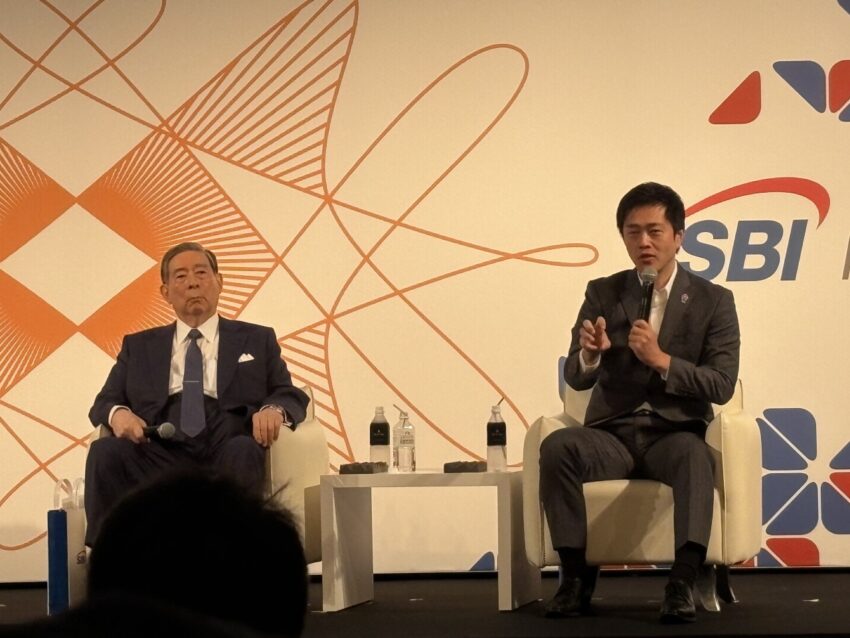Asia’s Financial Hub Race Heats Up as Stablecoins Reshape Regional Competition
Forget traditional banking hubs—Asia's financial future is being rewritten in code. Stablecoin adoption is accelerating across the region, forcing financial centers from Singapore to Hong Kong to either adapt or get left behind.
The New Battleground
Regulators are scrambling to keep pace with dollar-pegged digital assets that bypass traditional banking channels. Japan's FSA recently fast-tracked stablecoin guidelines while Singapore's MAS expanded sandbox testing—clear signals that the rulebook is being rewritten in real-time.
Hong Kong's play? Positioning itself as the Web3 gateway to China while maintaining stricter capital controls. Meanwhile, Seoul and Tokyo are leveraging their tech infrastructure to attract stablecoin issuers looking for regulatory clarity.
The irony? Banks that once dismissed crypto are now lobbying for stablecoin issuance rights—nothing inspires innovation like the threat of obsolescence.
This isn't just about technology—it's about who controls the next generation of global liquidity. The race won't go to the fastest regulator, but to whoever balances innovation with stability without stifling growth. Asia's financial hubs are learning: adapt quickly or watch the future built elsewhere.
Korea: Pivot Toward Private Stablecoins and Retail Payments
Once focused primarily on central bank digital currency (CBDC) initiatives, South Korea has accelerated a pivot toward private stablecoins. The Financial Services Commission is set to introduce a comprehensive regulatory bill to parliament in October 2025, encouraging the rollout of won-backed stablecoins. At the same time, the Bank of Korea has also launched a dedicated digital asset team, advancing oversight and market development.

Major players like KakaoBank are preparing to enter the market, with retail payments and cross-border remittances seen as key growth drivers. Korea’s advantage lies in its advanced digital infrastructure and widespread adoption of fintech. With mobile payments and online banking already ubiquitous, the country is well-positioned to scale consumer-oriented stablecoin usage once regulation is in place rapidly.
Japan: First Mover With a Comprehensive Legal Framework
Japan has established one of the world’s most comprehensive legal regimes for stablecoins. The revised Payment Services Act, enacted in June 2025, distinguishes stablecoins from cryptocurrencies by classifying them as “electronic payment instruments.” The Financial Services Agency (FSA) strictly oversees issuers, limiting them to banks, trust companies, and licensed money transfer firms.
JPYC registered as a money transfer operator and will launch a yen-pegged stablecoin in autumn 2025. The initial issuance target is $68 billion, with a long-term goal of $6.8 billion. Circle introduced USDC to Japan in March 2025 via SBI VC Trade. Mitsubishi UFJ Trust is preparing its Progmat Coin system.

Japan launched the world’s first yen-backed stablecoin, which is legally recognized as a payment instrument. Expected use cases include carbon credit trading, trade settlements, and cross-border payments. Osaka hosts a growing cluster of startups and international institutions. Japan aims to become Asia’s stablecoin hub through clear regulations and active market adoption.
Hong Kong and Singapore: Competing Through Licensing
Hong Kong implemented its Stablecoin Ordinance on August 1, 2025, introducing Asia’s first comprehensive licensing regime. Furthermore, issuers must maintain full reserves in high-quality liquid assets and comply with stringent anti–money laundering and know-your-customer requirements. Authorities plan to issue the first licenses in early 2026, while more than 40 firms prepare applications. Hong Kong focuses on transparency and institutional credibility. However, delays in practical adoption may slow its momentum compared with Japan and Korea.
Meanwhile, Singapore enacted its Digital Token Service Provider (DTSP) framework in June 2025, setting strict requirements and generally restricting overseas-focused issuers. While Paxos gained approval in 2024, the broader market remains under development. Singapore’s cautious stance underscores its preference for long-term stability over rapid expansion.
China: Eyeing Yuan Internationalization Through Stablecoins
In August 2025, a media report said Beijing began exploring a yuan-pegged stablecoin as part of its broader strategy to reduce reliance on the US dollar and accelerate renminbi internationalization. The government will also release a roadmap later this month and plan initial rollouts in Hong Kong and Shanghai.
China has already led the deployment of CBDC, raising questions about its overlap with private stablecoins. However, given its policy scale and market influence, a yuan-backed stablecoin could significantly reshape Asia’s financial landscape.
Outlook: Competing Models for Asia’s Next Financial Center
The stablecoin race is redefining what it means to be an Asian financial hub. Japan leads in legal frameworks and enterprise adoption, Korea in consumer infrastructure, Hong Kong in regulatory credibility, Singapore in cautious long-termism, and China in currency internationalization.
As Osaka’s efforts demonstrate, future financial leadership will hinge on capital concentration, regulatory clarity, real-world utility, and policy agility. The balance of these three elements may decide which city claims the Mantle of Asia’s next financial hub.

